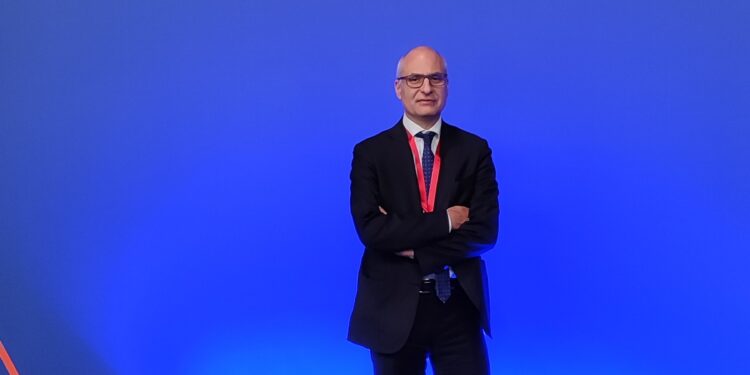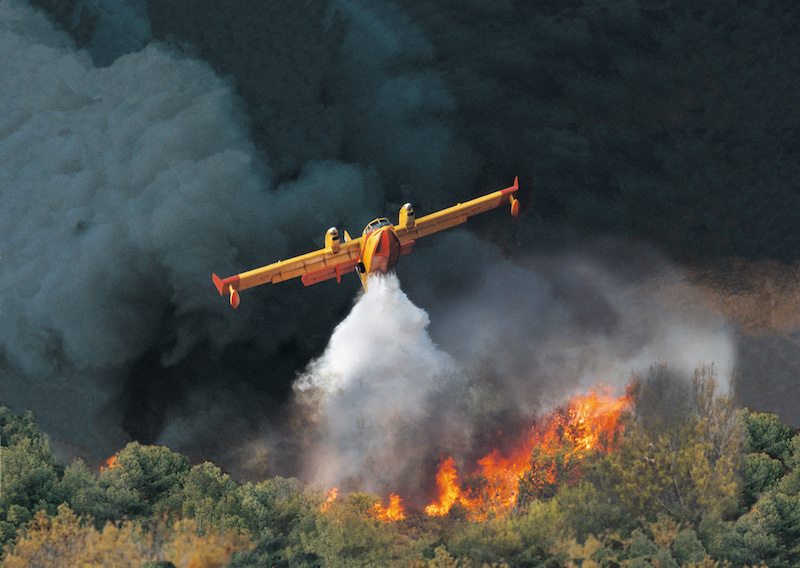Brussels – Extreme natural events on the rise, European cooperation in Civil Defense activities, sensitivity of young people and duty to create stronger attention among citizens. These were many of the topics discussed with the head of the Civil Protection Department, Fabrizio Curcio, on the sidelines of the eighth European Civil Protection Forum held in Brussels on June 4–5. It was also an occasion on which Italy’s national civil defence system received an important award: the European Medal for its contribution to Derna, Libya, after the devastation caused by Cyclone Daniel in September 2023. “The award is a sign that we are on the right track and is a recognition of the system,” Curcio said.
“The activities that we carried out in September 2023 in Libya are related to a natural event, which destroyed a small town, bringing terrible images, stories, and situations to people, and as always, we acted promptly, including through the Mechanism, but not only, because with Libya we have established relations,” the department head recalled. “And this mission was born, which was quite exemplary because it combined the typical characteristics of an activity involving several organisations, civilian and military in this case, with security aspects because the territory on which we were operating is a territory with security issues to be taken into account,” he recounted. “The system came across as cohesive and consolidated. All this was done within a delicate framework: therefore, with liaison with the Ministry of Foreign Affairs, which is our point of reference when we operate outside our territory, and with the Agencies that ensured our contact with local authorities and a kind of operational protection,” Curcio described.
The medal is an award that “we as a department collected because there is this moment of meeting in this eighth Civil Defense Forum, but it is a recognition not only to those who worked in Libya but to all those who made it possible. Because for 100 or 200 people who go, there is a world that moves: the world of the regions, of the municipalities, of the volunteers who helped, there is a whole system that is activated and that is often unseen,” the department head pointed out. “We always see those who are on the front lines. But we know that whenever someone is working, there is an organisation that enables them to do it. And then it is also a recognition not only of this operation—we are happy that it has been perceived in the European arena as a model—but of a system that operates daily in small or big emergencies. And so we will share it with everyone,” the department head pointed out.
At the two-day forum in Brussels, the emphasis was on lessons learned in the crises of recent years and ways forward in civil protection. “The Mechanism has 20 years of practice, and we have built a common language, operating procedures, and a series of activities ranging from training, including experts, to exchanging knowledge through increased relations with the scientific community. We have done so many things. In this common path, there were then the paths of the individual states. Italy worked with this twofold vision: on the one hand, it established the national civil protection system that we know, and on the other hand, it contributed to the formation of this system that today sees the 27 countries plus the ten associates that are not part of the EU but of the Mechanism. This,” Curcio continued, “helps us because by now, we are organised and structured in a clear way, and the community is very strong: as soon as something happens, the administrations, agencies, and general directors immediately exchange information.
So, “beyond what the central system does, there is a community that thrives on relationships and knowledge,” and “it is clear that as events become more numerous and complex, the mechanism is broken in and gives a response. However, if you ask me whether this is enough, the answer is: ‘Certainly not.’ This means that we cannot be satisfied that this thing is working enough because, from a perspective, the numbers and complexity will increase even more,” Curcio specified. “Today, there is not only an issue, which is already important, of increased extreme events but also an issue of geopolitics. Activities are being requested that are not strictly related to the Civil Defense system as we imagined it 20 years ago because 20 years ago, there was no talk of climate change, and there was no war in Europe. So it’s obvious that this system that we have built in 20 years today questions what the perspective of the system will be,” he pressed.
“We start from quite different organisations, which have found moments in common in the Civil Defense system, but when touching on other issues, they need a more in-depth discussion. It is no mystery that we are moving from emergency management to crisis management, a broader concept than Civil Defense management. The discussion is ongoing, and I am convinced that the Civil Defense system, which has the chain of Civil Defense policies and operational management and consequence management, will also have to participate in a chain that will not be Civil Defense,” he stressed further.
In the meantime, however, Civil Defense activity is daily and increasingly necessary. However, the starting point continues to be citizen awareness. “If we do not have a clear picture of the situation and awareness as institutions, organisations, and citizens, we struggle. Any process has to start with awareness of a given situation. That is the first point; otherwise, we run the risk of demagoguery. The first point is: are we all convinced that we understand that we are in a mechanism that has changed? I am not enamoured with definitions because they can have instrumentalised reading. If we had had a certain number of national emergency interventions per year before, today this value has increased,” he illustrated. “Since 2020, we have more than 40 to 50 declarations of state of emergency that we manage simultaneously. We had the flood in Marche on September 15, 2022, in Ischia in ’22, then in ’23 in Emilia Romagna, and then in Tuscany. In all these events, we have recorded values of rainfall in the unit of time that are full-scale, never recorded before: call it what you want, but it is clear that we have a theme of periodicity and intensity of events,” he said. “Added to that are equally important periods of drought. And we see that these days: what happened in Friuli Venezia Giulia and Veneto is juxtaposed with Sicily, which is in a declaration of a state of emergency for drought. On the one hand, we send in the water pumps; on the other hand, there is a major water shortage. It is clear that we need to become aware of this: as institutions and as citizens,” he pointed out further.
“If we start from this assumption of awareness,” he added, “and then understand that these things also depend on higher decisions but then engage us in the day-to-day, especially in safeguarding our lives because the first responder must be the one who understands what condition you are in at that moment—then we can make a more structured reasoning. We can talk about structural prevention, which is a topic on the agenda and which all administrations do, in the coordination booths, in the directorates where resources are put together with respect to the objectives, and we can talk about non-structural prevention, so plans, communication, knowledge of the best behaviours, national campaigns that we do to reach citizens, such as ‘I don’t Risk,'” he recalled.
“Then there is an issue of resources and citizen push: when the citizen pushes and increases demand, institutions and administrations respond. Instead, at times, I see blaming. The institution must carry out information and communication activities; however, the citizens must be ready to take it in. For example, I talk about prevention only in the emergency because there is no attention when I try to do it outside the event. Not because the press has no intention, but because it makes a communication when there is someone to receive it on the other side,” the department head recounted. “This is a complex circuit, and it is not someone’s fault. We must work so that this attention grows among the citizens, institutions, and various stakeholders. In everyone. Everyone has a life that leads them to deal with daily problems; perhaps we should find ways to make daily life interact with these issues. Because if we deal with something only when it happens, it is already too late,” he reiterated.
On this path, however, there is no shortage of positive elements. “The work we do with schools goes in that direction. For example, I see that children are sensitive to issues, such as wasting water or energy, that we did not have at their age. It means that a little bit is invested in this issue, but in others, not yet. The cultural issue here makes the difference: if you are native to certain issues—the environment, water use, air quality, risk awareness—those become natural to you, like walking. And I think we all have the tools to work on adults, but more importantly to lay the groundwork on some things to make those who are to come ‘native’ to certain issues.” So, is the final message positive? “Absolutely. The message has to be positive: if not, we should change our profession,” Curcio concluded.
English version by the Translation Service of Withub








